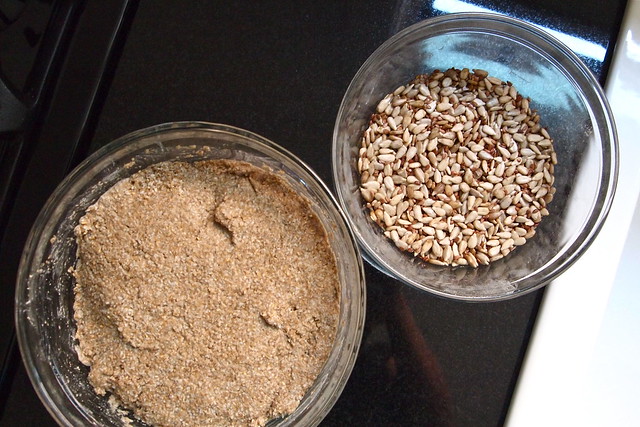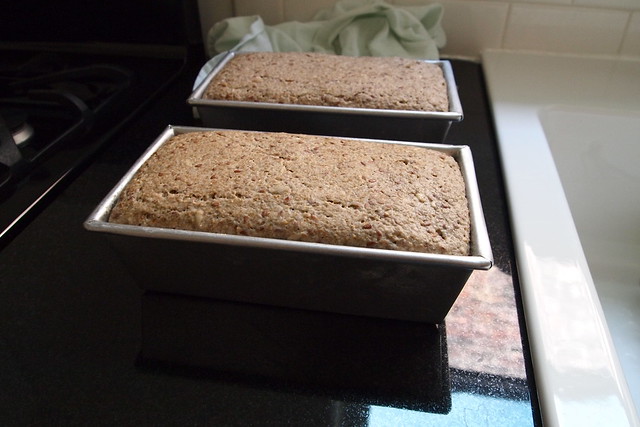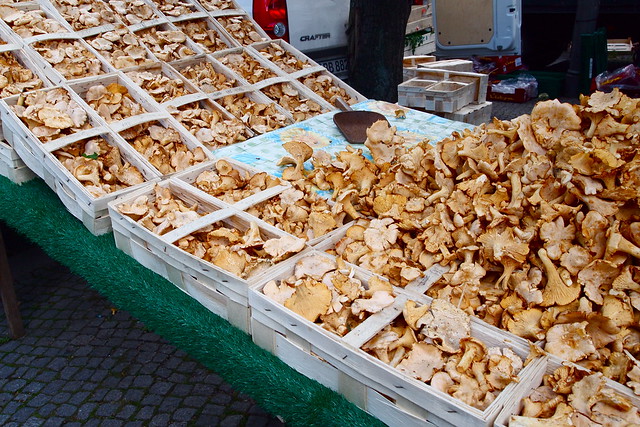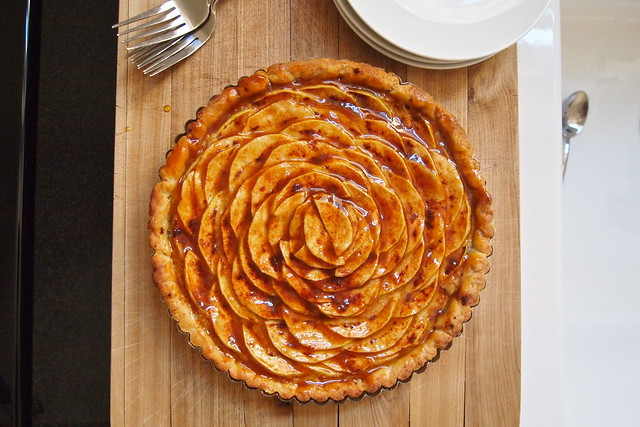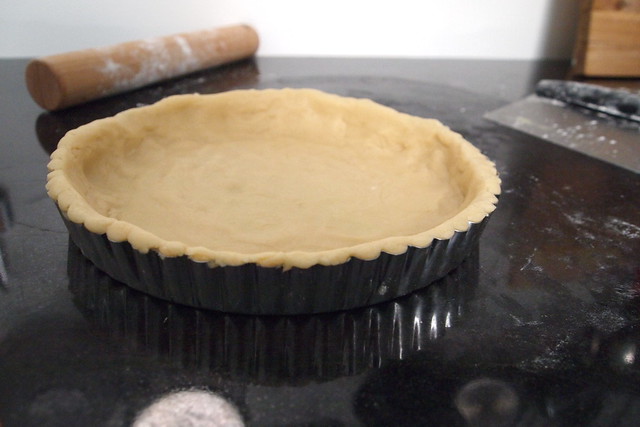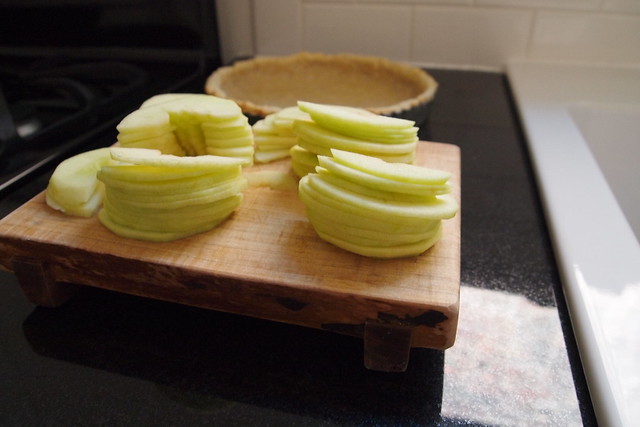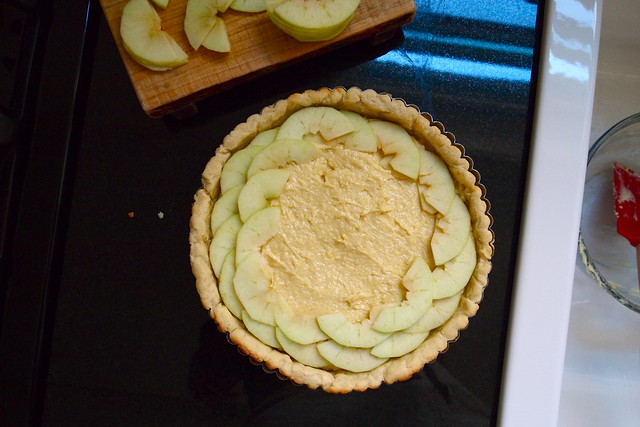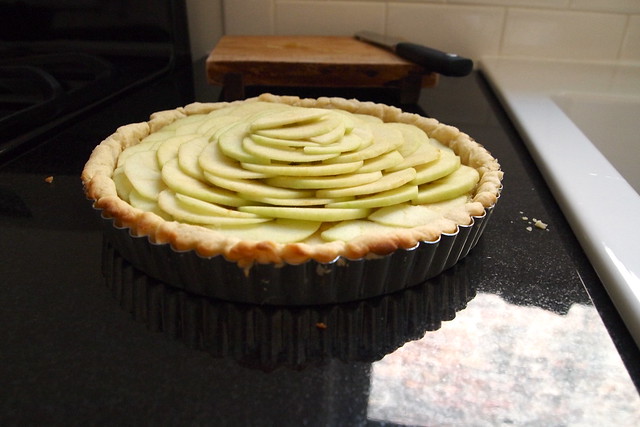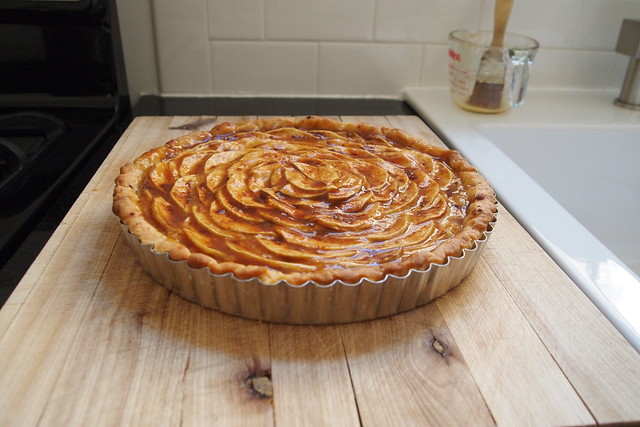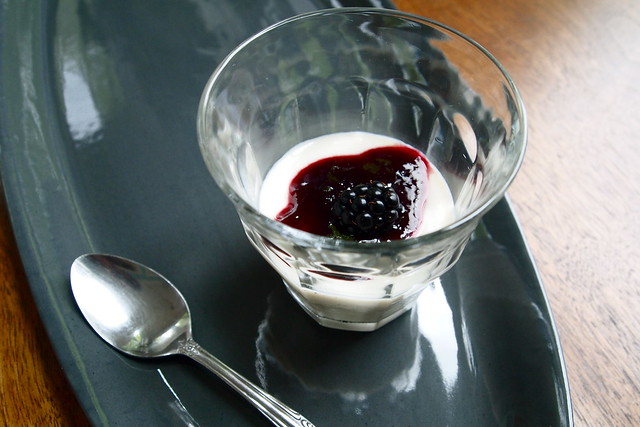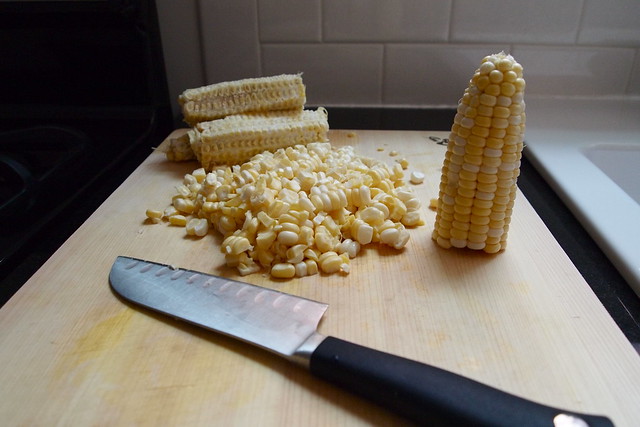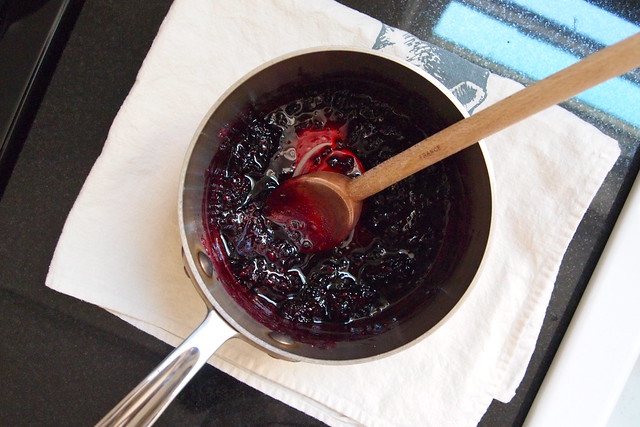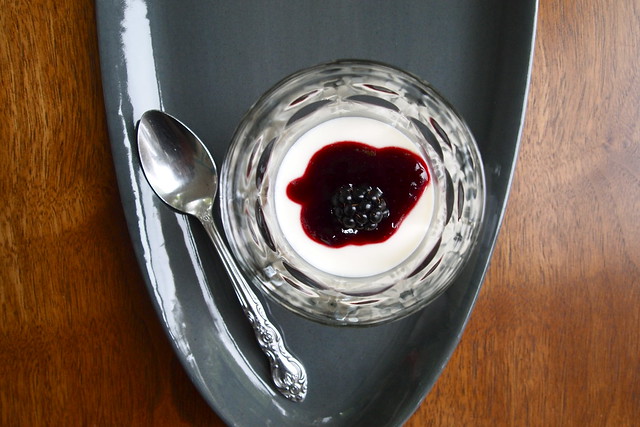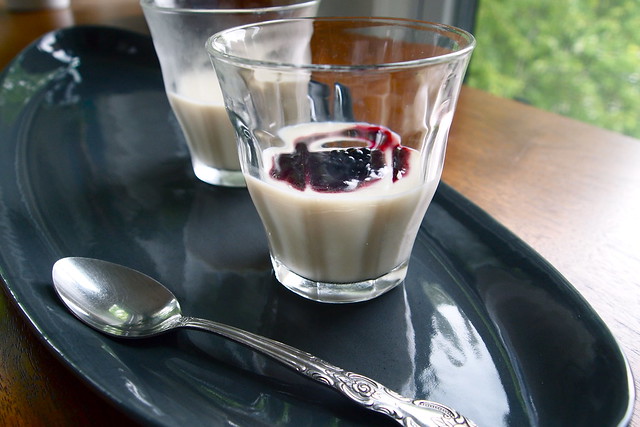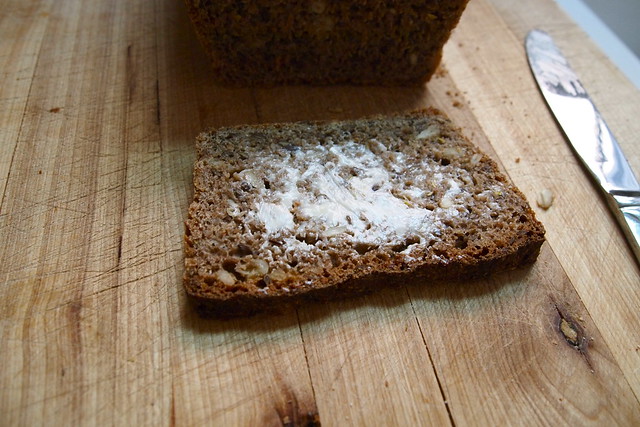
Berlin, at least as I experienced it, is a city with a complicated personality, one that I feel I can't really have begun to fathom having had only two weeks there. I think I'd need more time, a lot more time, to wander its streets and to piece together what I'd find, to really say anything definitive. Still, I'll say this much--Berlin is a city that resists easy definition, a city that's a lot of things. Parts of it have the look, the feel, the grandeur of another time. My first night there, I followed the cobbled streets from the hotel towards the Spree, the river that runs through the city. Reaching the river, I was taken aback by the view--the Bode Museum towered at a fork in the waters, its dark, gilded dome awash in the setting sun. It was magical. And the city kept doing this, kept leaving me breathless when I'd least expected it. I'd turn a corner and stumble into a beautiful shaded courtyard, or I'd lose my way in a neighbourhood and find myself at the gates of an old palace. And just walking through the halls of the Neues Museum, those light-filled, airy halls, was worth the price of admission. But for all that, Berlin never felt old or tired or stuck up. There was too much going on in its streets, in its myriad, hidden courtyards, for it to feel anything like that. People were gathered, wherever I was in Berlin--in lines waiting for kebap, in spirited protest in the streets, at market stalls overflowing with chanterelles, in leafy, light-strung courtyards, drinking the night away. Berlin to me felt young, alive, still in the midst of finding and defining itself.
And the food, I think, reflected this, this complicatedness about Berlin. I ate plenty that was decidedly very German--leberkäse with mustard, a sort of pinkish slab of finely ground pork, onions, and liver, the edges crisp and golden from baking, the best and simplest of potato salads, sharply dressed and slicked with olive oil (Cafe Sgaminegg), a meltingly tender pork knuckle, flaky pastries chock-full of poppy seeds (Brot und Butter), and Wienerschnitzel, of course. But I also ate lots that was decidedly and excitingly less traditional--a pizza with perfectly crisp, blistered crust scattered with edible blossoms (Prinzessinnengarten), a crunchy, hazelnut-crusted potato dumpling suspended over green gazpacho (Lucky Leek), gem-like squares of lokum whose flavour lingered hauntingly in the mouth (Confiserie Orientale), morsels of sesame-coated, sweet-miso fudge savoured between sips of matcha (Oukan). So Berlin's food scene, like the rest of the city, I would say, resisted definition, was a lot of things.
Of the city's more traditional offerings, vollkornbrot was definitely a favourite of mine. Vollkornbrot is a dark, dense, seed-studded whole-grain rye bread. And, quite frankly, to those of us most familiar with the lofty, open-crumbed loaves of a more French provenance, it can look a little uninviting, a little intimidating, even--like you might break a tooth on your first bite. But let me assure you, vollkornbrot is wonderful stuff. There's an earnestness to its dense, coarse crumb, which, I think, is all the more appropriate to its dark, complex flavour. I braved a slice at one of my first breakfasts in Berlin, and after that, I always made sure to look for one of those tell-tale dark, squat loaves wherever I was.
I knew that I would miss vollkornbrot back at home. I was determined to find a way to make it myself. It didn't take much--as it happened, the last issue of Lucky Peach (my airplane/laundromat reading for the trip) included a recipe. A happy coincidence. I got started as soon as I could.
Making vollkornbrot doesn't take much, though you do need sourdough starter for the levain. (Making friends with a more intrepid baker than yourself can come in handy for this part.) The night before, you start the levain and soak sunflower and flax seeds in water. Soaking the seeds prevents them from pulling water from the bread and helps to keep the loaf moist. In the morning, you mix the levain and seeds with the remaining ingredients--coarse rye flour, hot water, and salt. Then, you transfer the dough directly to loaf pans to proof. There's no kneading, no shaping involved. After that, the loaves just need a thorough bake.
The resulting vollkornbrot is incredible. The long bake leaves the exterior of the loaves dark and toasty and brings out a nutty, almost coffee-like sweetness in the rye. I'm not sure that I've had bread crust more flavourful, more complex. This gives way to a moist, dense, seed-speckled crumb with the distinctive sourness of a long, wild-yeast-driven proof. I like starting my morning with some, thinly sliced and generously buttered, sometimes topped with a spoonful of preserves. But maybe one of these days, when I'm feeling really nostalgic for Berlin, I'll have to have my vollkornbrot like the Germans do and pile my buttered slices with some good cured meat.
Rhonda Crosson's Vollkornbrot
Adapted, just a little, from Lucky Peach no. 4
Note: About the flour. I had trouble finding rye flour milled to an appropriate coarseness, so I used a combination of stone-ground medium-grind rye and rye meal. The latter is basically rye berries ground to the consistency of something more like steel-cut oats than flour. (You can find rye meal pretty easily through Amazon, if it isn't available at your local grocery store.) I decided on the ratio by feel. It ended up being about 40 percent rye meal and 60 percent medium-grind flour, which I liked quite a lot. About the loaf pans. I made my loaves in 4" by 8" loaf pans, letting the dough proof for about 4 hours, just until it crested over the lip of the pans. If you own a pain-de-mie loaf pan, this might be the time to use it. I saw a lot of loaves of vollkornbrot in Berlin with those perfectly rectangular sides. There's something aesthetically pleasing about that.
UPDATE, 2013-01-30. About its shelf-life. I haven't yet tested the recipe's claim that this bread will last for months in the fridge, but I have tried storing a loaf, very tightly wrapped, for three or so weeks. It does keep remarkably well in the fridge, though, unsurprisingly, it is a tad drier around the edges, more so than I would like. I've found that this is nothing a quick spell in the toaster and a good slathering of butter (or mashed avocado and salt) won't fix. Even so, I might stick to baking one loaf at a time in the future.
UPDATE, 2013-01-30. About its shelf-life. I haven't yet tested the recipe's claim that this bread will last for months in the fridge, but I have tried storing a loaf, very tightly wrapped, for three or so weeks. It does keep remarkably well in the fridge, though, unsurprisingly, it is a tad drier around the edges, more so than I would like. I've found that this is nothing a quick spell in the toaster and a good slathering of butter (or mashed avocado and salt) won't fix. Even so, I might stick to baking one loaf at a time in the future.
RYE LEVAIN:
53 g sourdough starter
538 g coarse rye flour (see note above)
457 g water
SOAKER:
92 g flax seeds
92 g sunflower seeds
182 g water
FINAL DOUGH:
350 g coarse rye flour
218 g hot tap water
20 g fine sea salt
Make the levain. In a large bowl, combine the levain ingredients and mix by hand. Cover with plastic wrap and allow to ferment at room temperature overnight, about 8 to 12 hours, until the mixture is gassy and doubled in size. Meanwhile, combine the soaker ingredients and cover with plastic wrap. Allow to soak at room temperature overnight, 8 to 12 hours.
The next day, combine the levain, soaker, and remaining ingredients in the bowl of an electric mixer. Using the paddle attachment on slow speed, mix until very well incorporated and smooth--this could take up to 10 minutes. Slow speed is important to avoid breaking up the delicate pentosans, the gummy sugars responsible for the structure in rye breads. The resulting dough, though cohesive, should be rather wet and batter-like. Rye, unlike wheat, has very little gluten in it.
Portion the dough into two 9-1/2" by 5" loaf pans that have been greased and lightly coated with rye flour. Using wet hands, press down to level out the dough and smooth the surface. Proof in a warm place until the dough almost reaches the top of the pan. This will take anywhere from 2 to 6 hours.
Heat the oven to 450 degrees F. Bake the loaves for 40 minutes, then drop the temperature to 400 degrees F and bake for another 30 to 40 minutes, until the top of the loaf is very brown. A thorough bake is important with a dense rye like vollkornbrot. If it isn't baked all the way through, it will be gummy and sticky.
After baking, let the bread cool completely--as long as a whole day--before slicing. Wrapped very tightly in the fridge, this bread will keep for three or four months.
Makes two 9-1/2" by 5" loaves.
Makes two 9-1/2" by 5" loaves.




